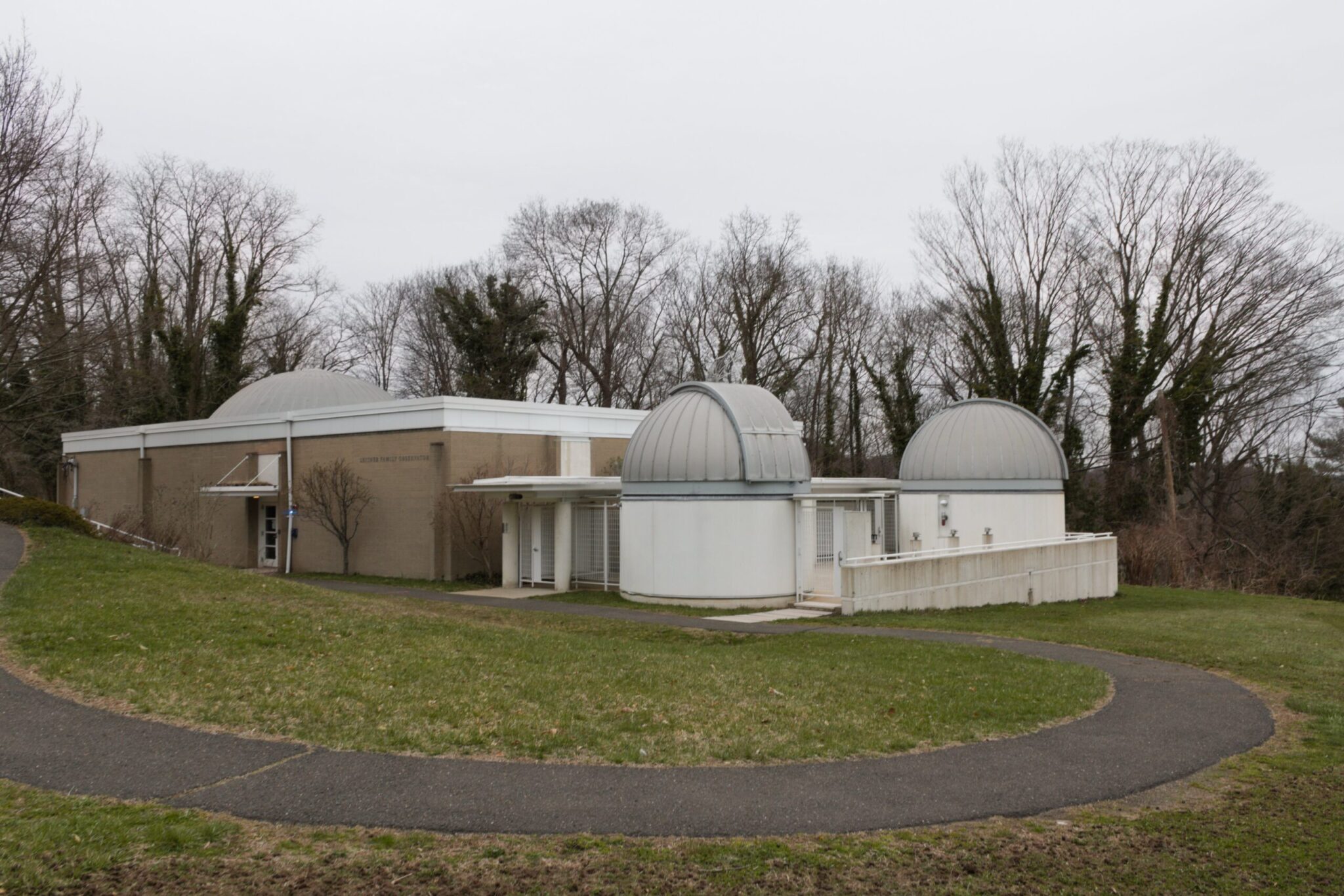What to know for watching the solar eclipse at Yale
While some students plan to see the eclipse in its full totality in Vermont, students and families in New Haven can view Connecticut’s 91 percent partial solar eclipse at the Leitner Family Observatory and Planetarium.

Alyssa Chang, Contributing Photographer
Students and the Leitner Family Observatory are gearing up to watch the solar eclipse next Monday, April 8 — which marks the first total solar eclipse visible from the United States since 2017.
A solar eclipse is a phenomenon in which the Moon visibly covers the Sun, causing momentary darkness. However, only those on “the path of totality” — the trajectory where the Moon fully covers the Sun — can people see a total eclipse. People in surrounding areas may be able to experience a partial eclipse. On average, a total solar eclipse occurs once every 18 months, though many areas can go decades or centuries without being able to witness them.
Because Connecticut is not in the path of totality, residents will see a partial solar eclipse. Those in New Haven will witness 91 percent coverage, meaning the moon will visibly block 91 percent of the Sun. The path of totality will pass through Vermont, located just four hours away from campus.
“The eclipse will be equally visible from anywhere on campus,” Michael Faison, the director of the Leitner Family Observatory and Planetarium, told the News. “But if you can, I would suggest those who can go up to Vermont to see totality.”
Several students told the News that they are planning to leave campus on Monday to see the total solar eclipse in either Vermont or upstate New York.
Julia Levy ’25, an astrophysics and computer science major, is one of those students. She said that she plans on leaving campus with friends and family to see the full eclipse.
“A bunch of my astrophysics classes won’t be holding class on Monday because so many of us and our professors are leaving to see totality,” Levy said.
In New Haven, the partial eclipse will begin at 2:12 p.m. For those staying on campus, the Leitner Family Observatory and Planetarium will hold a viewing party in which visitors can watch the eclipse through its special telescope, said Kristin Kampp, the program coordinator of the center.
The observatory will feature a telescope with an attached solar finder, which will automatically center the telescope with the eclipse, and a hydrogen-alpha filter, which will allow viewers to see the sun’s light safely. The Planetarium will also provide a limited amount of solar eclipse glasses.
“Since we are not on the path of totality, you cannot look directly [at the eclipse,] no matter how dark it might seem to get,” Faison said. “You can only look directly at the eclipse if you have the glasses on.”
Levy encouraged families and students to bring their own DIY pinhole devices, such as colanders, to help view the eclipse safely.
“The pinholes in the colander reflect an image of the eclipse onto the ground,” Levy said. “You can get the same effect with a piece of paper with a small hole in it.”
Miriam Huerta ’24 will be volunteering at the observatory during the eclipse. In 2017, Huerta traveled from Wisconsin to St. Louis, Missouri to observe the eclipse in the path of totality.
Huerta will help operate the telescope and other equipment on Monday.
“I am excited to get people to come and see it,” Huerta said. “I think it is a great opportunity to see STEM education in action.”
Levy noted that viewers will also be able to see other celestial bodies and phenomena in the sky beyond just the eclipse.
“We should be able to see some of the planets,” Levy said. “If the sky is clear, you could see Venus to the right and Jupiter to the left of the eclipse. You might be able to see [stars] Rigel and Sirius as well, though there will probably be buildings in the way.”
NASA predicts that the next total solar eclipse that will be visible from the United States will be in 2044.







